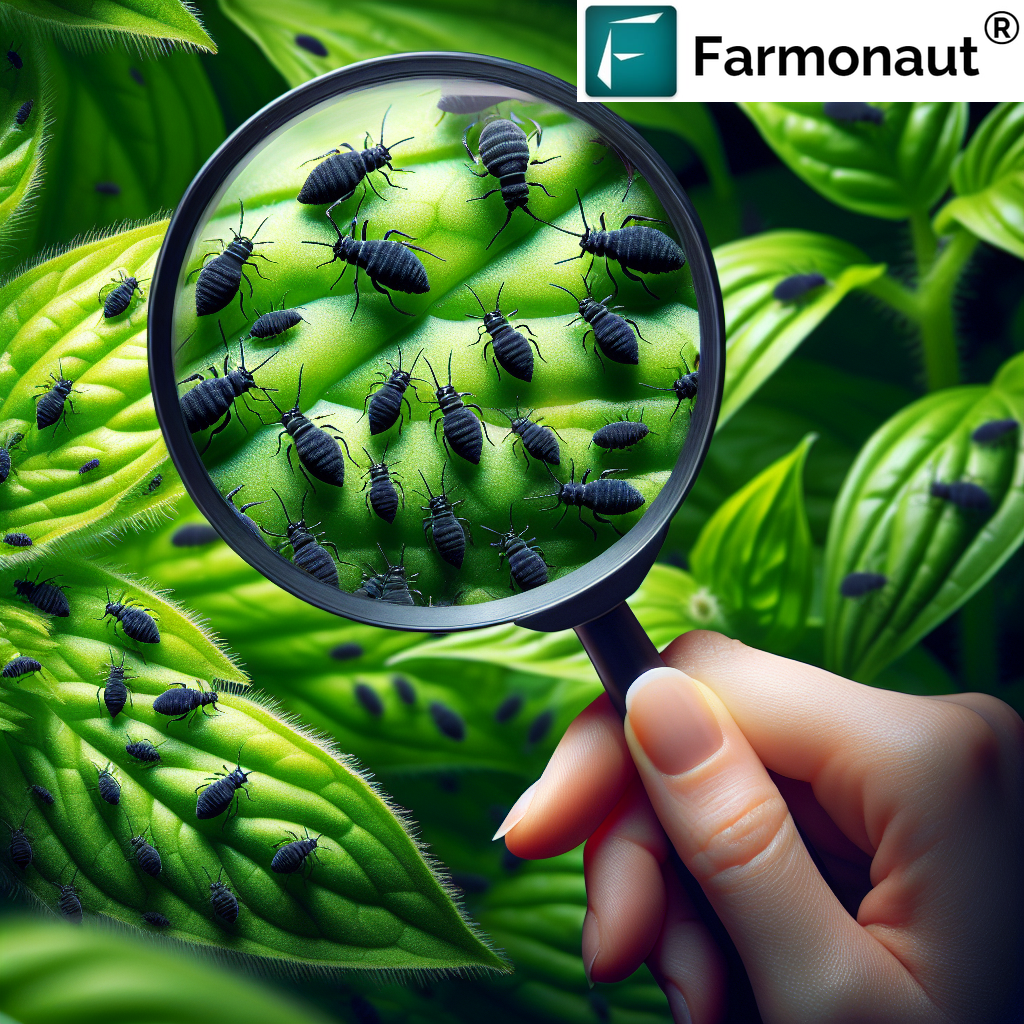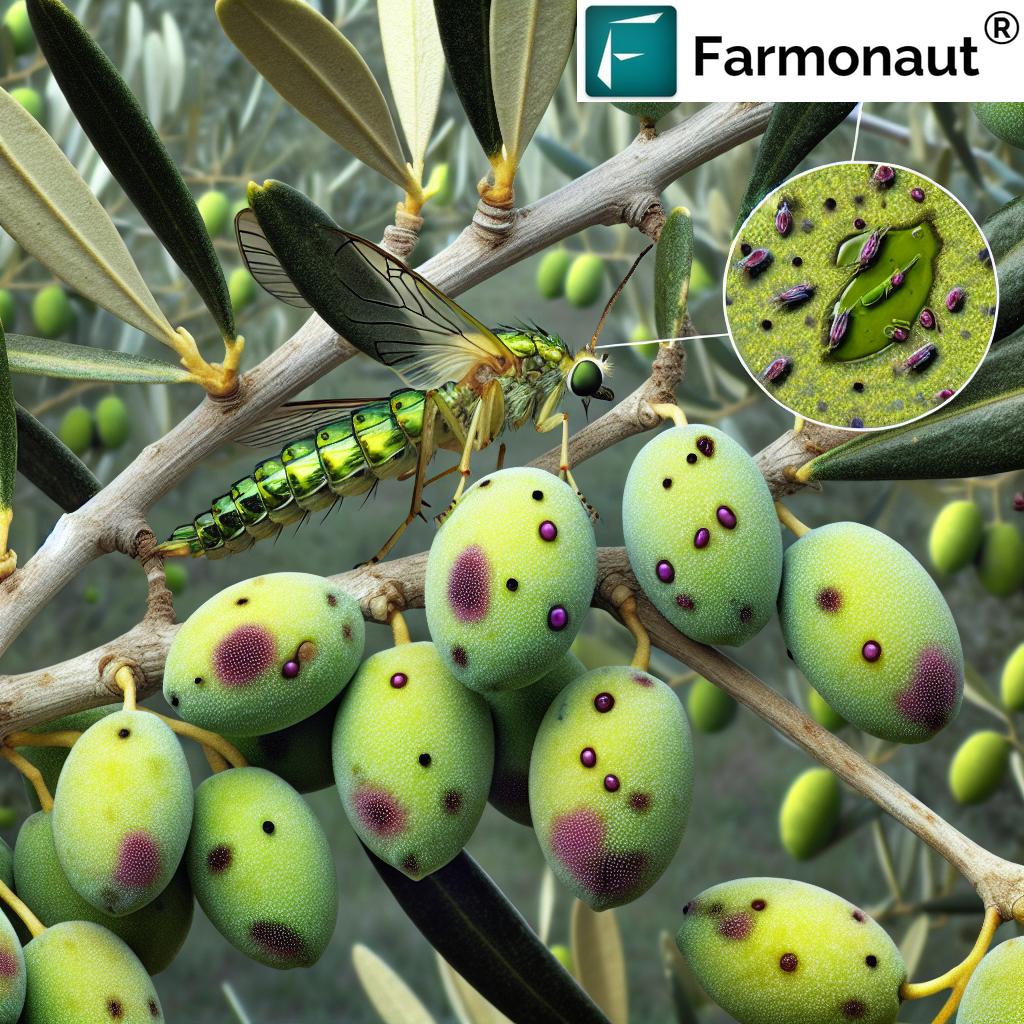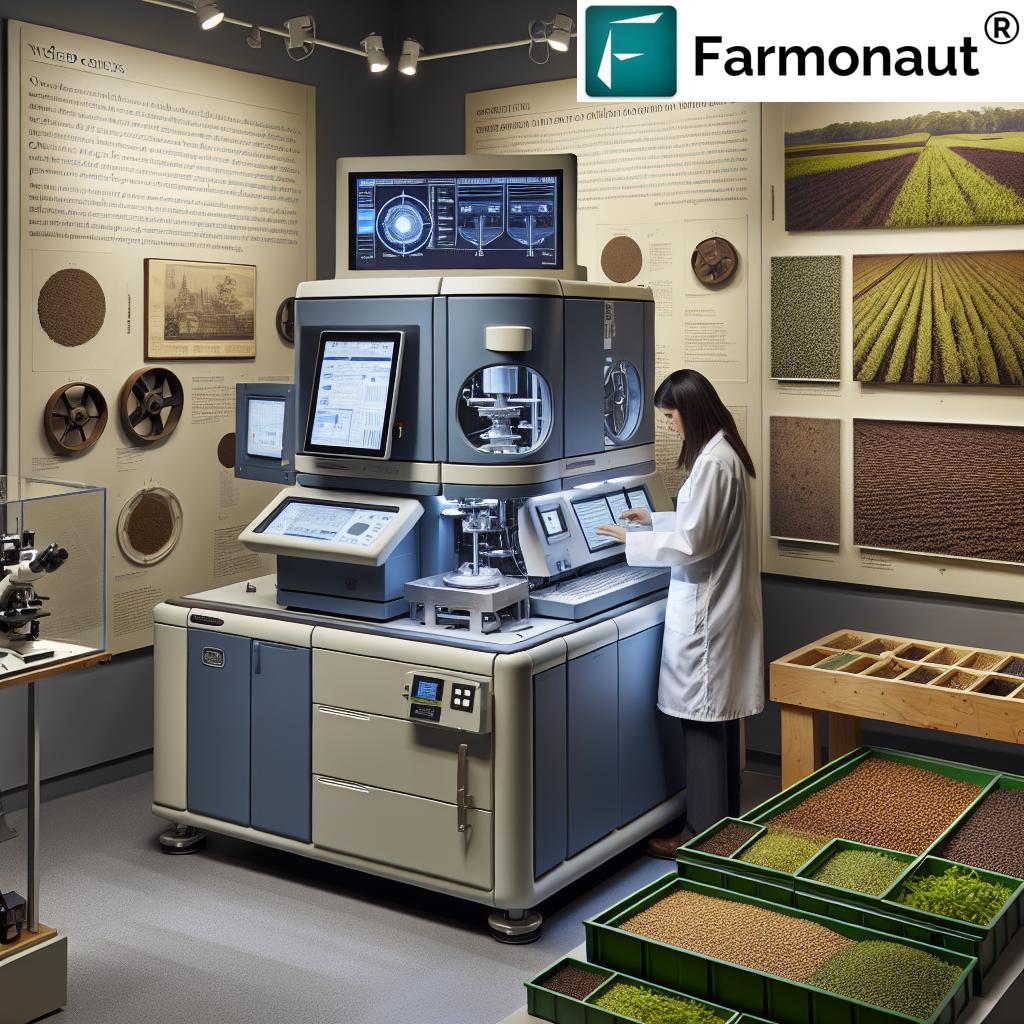Effective Strategies to Get Rid of Black Aphids: A Comprehensive Guide for Farmers

As farmers and agricultural enthusiasts, we understand the challenges that pests can pose to crop health and yield. Among these pests, black aphids are particularly troublesome, capable of causing significant damage to a wide range of crops. In this comprehensive guide, we’ll explore effective strategies on how to get rid of black aphids, ensuring your crops remain healthy and productive.
Understanding Black Aphids
Before we delve into the methods to get rid of black aphids, it’s crucial to understand these tiny yet destructive pests.
What are Black Aphids?
Black aphids, scientifically known as Aphis fabae, are small, soft-bodied insects that feed on plant sap. They typically measure about 1.5-2mm in length and can be identified by their dark coloration, which can range from deep brown to black.
Life Cycle and Reproduction
Black aphids have a rapid reproductive cycle, which contributes to their status as a major agricultural pest:
- Female aphids can give birth to live young without mating.
- Under optimal conditions, they can produce up to 5 offspring per day.
- The lifecycle from birth to reproductive maturity can be as short as 7-10 days.
- This rapid reproduction can lead to large infestations in a very short time.
Damage Caused by Black Aphids
The impact of black aphids on crops can be severe:
- They feed by piercing plant tissues and sucking out sap, weakening the plant.
- Their feeding can cause leaf curling, yellowing, and stunted growth.
- Black aphids excrete a sticky substance called honeydew, which can lead to the growth of sooty mold on leaves.
- They can transmit plant viruses, further compromising crop health.
Identifying Black Aphid Infestations
Early detection is key when it comes to how to get rid of black aphids. Here are some signs to look out for:
- Clusters of small, black insects on the undersides of leaves, stems, and buds.
- Curled or distorted leaves, especially new growth.
- Sticky residue (honeydew) on leaves or on the ground beneath plants.
- Presence of ants, which are attracted to the honeydew produced by aphids.
- Black, sooty mold growing on leaves or stems.
Strategies to Get Rid of Black Aphids
Now that we’ve covered the basics, let’s explore effective methods to get rid of black aphids and protect your crops.
1. Cultural Control Methods
These preventive measures can help reduce the likelihood of black aphid infestations:
- Crop rotation: Avoid planting susceptible crops in the same area year after year.
- Companion planting: Grow plants that repel aphids, such as marigolds, nasturtiums, or alliums, near susceptible crops.
- Proper plant spacing: Ensure adequate airflow between plants to make the environment less hospitable for aphids.
- Regular monitoring: Inspect plants frequently to catch infestations early.
- Pruning: Remove heavily infested parts of plants to prevent the spread of aphids.
2. Physical Removal
For small infestations, physical removal can be an effective way to get rid of black aphids:
- Water spray: Use a strong jet of water to dislodge aphids from plants. This method is particularly effective for small gardens or individual plants.
- Hand removal: For minor infestations, you can remove aphids by hand or by pruning affected parts of the plant.
- Sticky traps: Place yellow sticky traps near affected plants to capture winged aphids.
3. Biological Control
Encouraging natural predators can be an effective and environmentally friendly way to control black aphid populations:
- Ladybugs: Both adult ladybugs and their larvae are voracious aphid eaters.
- Lacewings: Green lacewing larvae, known as “aphid lions,” feed on aphids and other soft-bodied insects.
- Parasitic wasps: These tiny wasps lay their eggs inside aphids, eventually killing them.
- Hoverflies: The larvae of these beneficial insects feed on aphids.
- Birds: Encourage insect-eating birds by providing birdhouses and water sources in your garden or farm.
To attract and retain these beneficial insects, consider planting flowers such as dill, fennel, and yarrow around your crops.
4. Chemical Control
While we always recommend starting with less invasive methods, chemical control may be necessary for severe infestations. Here are some options:
- Insecticidal soaps: These are effective against soft-bodied insects like aphids and are relatively safe for beneficial insects.
- Neem oil: This natural insecticide disrupts the feeding and reproductive cycles of aphids.
- Pyrethrin-based insecticides: Derived from chrysanthemum flowers, these are effective against a wide range of insects, including aphids.
- Systemic insecticides: These are absorbed by the plant and kill aphids when they feed on the plant sap. Use these with caution as they can also harm beneficial insects.
Always follow label instructions and safety precautions when using any chemical control method.
5. Homemade Remedies
For those preferring natural solutions, here are some homemade remedies to get rid of black aphids:
- Garlic spray: Blend garlic cloves with water, strain, and spray on affected plants.
- Soap spray: Mix 1 tablespoon of liquid dish soap with 1 quart of water and spray on plants.
- Neem oil solution: Mix 1 teaspoon of neem oil and 1/2 teaspoon of liquid soap with 1 quart of warm water.
- Diatomaceous earth: Sprinkle this natural powder around plants to deter aphids.
Preventing Future Black Aphid Infestations
Prevention is always better than cure. Here are some strategies to keep black aphids at bay:
- Maintain plant health: Healthy plants are more resistant to pests. Ensure proper watering, fertilization, and soil health.
- Avoid over-fertilization: Excess nitrogen can lead to soft, succulent growth that’s attractive to aphids.
- Use reflective mulches: Silver-colored mulches can repel aphids and other flying insects.
- Implement crop barriers: Use row covers or insect netting to physically prevent aphids from reaching your crops.
- Practice good sanitation: Remove plant debris and weeds that can harbor aphids.
The Role of Technology in Pest Management
At Farmonaut, we understand the importance of early detection and precise management in pest control. Our satellite-based crop monitoring system can help detect potential pest issues before they become severe problems.

Here’s how Farmonaut’s technology can assist in managing black aphid infestations:
- Early detection: Our satellite imagery can detect changes in crop health that might indicate pest presence.
- Precision application: By identifying specific areas of infestation, we can help you target your pest control efforts more precisely, reducing unnecessary pesticide use.
- Monitoring effectiveness: After implementing control measures, our system can help you track the recovery of affected areas.
- Data-driven decisions: With historical data and real-time monitoring, you can make informed decisions about crop rotation and pest management strategies.
To learn more about how Farmonaut can help you manage pests and improve overall crop health, visit our app or explore our API services.
Comparison: Farmonaut Satellite System vs. Drone and IoT-based Farm Monitoring
| Feature | Farmonaut Satellite System | Drone-based Monitoring | IoT-based Monitoring |
|---|---|---|---|
| Coverage Area | Large (entire farms/regions) | Medium (limited by flight time) | Small (limited by sensor placement) |
| Frequency of Data Collection | Regular (as per satellite pass) | On-demand (requires manual operation) | Continuous |
| Initial Setup Cost | Low | High (drone purchase/operation) | Medium to High (sensor network setup) |
| Maintenance | Minimal | Regular (drone maintenance) | Regular (sensor maintenance/replacement) |
| Weather Dependency | Low (can penetrate clouds) | High (affected by wind, rain) | Low |
| Data Processing | Automated (AI-driven) | Semi-automated | Automated |
| Scalability | Highly scalable | Limited by equipment and manpower | Scalable, but costs increase with area |
Integrating Farmonaut into Your Pest Management Strategy
To make the most of Farmonaut’s technology in your fight against black aphids and other pests:
- Download the Farmonaut app from the Google Play Store or the Apple App Store.
- Set up your farm on the app, defining field boundaries and crop types.
- Regularly check the satellite imagery and health indices provided by Farmonaut.
- Look for patterns or anomalies that might indicate pest presence.
- Use this information to guide your scouting efforts and control measures.
- Track the effectiveness of your interventions over time.
For developers interested in integrating Farmonaut’s data into their own applications, check out our API documentation.
Conclusion
Successfully managing black aphid infestations requires a multi-faceted approach combining prevention, early detection, and targeted control measures. By integrating traditional methods with modern technology like Farmonaut’s satellite-based monitoring, farmers can stay one step ahead of these persistent pests.
Remember, the key to effective pest management is vigilance and quick action. Regular monitoring, maintaining plant health, and encouraging biodiversity in your farm or garden are all crucial steps in keeping black aphids and other pests under control.
We hope this comprehensive guide has provided you with valuable insights on how to get rid of black aphids. By implementing these strategies and leveraging advanced technologies, you can protect your crops and ensure a bountiful harvest.
FAQ Section
Q1: How quickly can black aphids infest a crop?
A1: Black aphids can multiply rapidly under favorable conditions. A small infestation can turn into a significant problem within 1-2 weeks due to their short reproductive cycle.
Q2: Are black aphids harmful to humans?
A2: Black aphids are not directly harmful to humans. However, they can significantly damage crops, affecting food production and quality.
Q3: Can black aphids survive winter?
A3: Some black aphid species can survive winter as eggs on host plants. Others may overwinter in protected areas or on winter crops.
Q4: How often should I monitor my crops for black aphids?
A4: We recommend checking your crops at least once a week during the growing season. More frequent monitoring may be necessary during peak aphid seasons or in areas with known aphid problems.
Q5: Are there any plants that naturally repel black aphids?
A5: Yes, certain plants can help repel black aphids. These include marigolds, nasturtiums, garlic, chives, and catnip. Planting these near susceptible crops can help deter aphids.
Q6: How can Farmonaut’s technology help in early detection of aphid infestations?
A6: Farmonaut’s satellite imagery can detect subtle changes in plant health that might indicate pest presence. Our AI algorithms analyze vegetation indices to identify patterns consistent with pest damage, allowing for early intervention.
Q7: Is it possible to completely eradicate black aphids from a farm?
A7: Complete eradication is challenging due to the rapid reproductive cycle of aphids and their ability to migrate. The goal should be to manage populations below damaging levels rather than total eradication.
Q8: How do I know if my aphid control methods are working?
A8: Signs of successful control include a visible reduction in aphid numbers, improved plant health, and the absence of new damage. Farmonaut’s satellite monitoring can also help track crop recovery over time.
Q9: Can black aphids develop resistance to pesticides?
A9: Yes, like many pests, black aphids can develop resistance to pesticides over time. This is why it’s important to use an integrated pest management approach and rotate control methods.
Q10: How does Farmonaut’s satellite monitoring compare to on-ground scouting for pest detection?
A10: While on-ground scouting provides detailed, close-up information, Farmonaut’s satellite monitoring offers a broader view of crop health across entire fields. It can identify problem areas that might be missed during ground scouting, making it an excellent complement to traditional methods.
For more information on how Farmonaut can revolutionize your farm management and pest control strategies, consider subscribing to our services:
By combining traditional pest management techniques with cutting-edge technology, we can work together to create more resilient and productive agricultural systems. Let’s embrace the future of farming, where data-driven decisions lead to healthier crops and sustainable practices.













